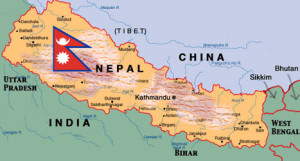Broken dreams: There is a need to critically discuss the Dalit movement in Nepal to move forward
 Nepal: The primary objective of politics is to move people from the margins to the centre and democracy has been regarded as the best tool to do this. However, this process has not really worked in Nepal. All political movements, right from the one in 1950, have, in principle, aimed to bridge the gap between the centre and the periphery. Yet, the gap has widened instead of closing. Why has this happened in Nepal? There are multiple reasons, but I shall only focus on political culture as the primary obstacle.
Nepal: The primary objective of politics is to move people from the margins to the centre and democracy has been regarded as the best tool to do this. However, this process has not really worked in Nepal. All political movements, right from the one in 1950, have, in principle, aimed to bridge the gap between the centre and the periphery. Yet, the gap has widened instead of closing. Why has this happened in Nepal? There are multiple reasons, but I shall only focus on political culture as the primary obstacle.
Search for answers
While there have been some positive changes after the political change of the 1990s, the political system as such has failed to provide justice to those who really need it.
Nepal’s history of religious tolerance, cross-cultural respect, linguistic understanding, and unity in diversity has made its society resilient. Nonetheless, praise for the history and culture of Nepal cannot come at the cost of neglecting past injustices. Why is Nepal suffering as a nation? What are the historical mistakes it has made? And, why it is not being able to write a new constitution? These are some frequent questions that have been raised for over 25 years but are tricky to answer at this point of political history.
To answer these questions, we need to look into the political culture of Nepal that has been established since the 1990s. From 1990 until 2006, Nepali politics was guided by rampant corruption, impunity, nepotism, and favouritism. The Maoist insurgency put a short break to these activities but surprisingly, they were insitutionalised after the Maoists joined the democratic political process after 2008. As a result, peoples’ aspirations were shattered.
The movement
Historical discrimination of minorities in Nepal has widely been accepted. People from the Tarai, women, and indigenous and the so-called Dalits have been economically, politically, and culturally discriminated against. Dalits, in particular, were and are treated viciously and have, as a result, languished at the bottom of society in all aspects.The story and reality of the Dalit community, therefore, is different. That’s why the community should have its own lens to look into its problems and its movement.
The Dalit community has never revolted against the state for its rights. Instead, it has always been hopeful of getting social justice from within the system. But unfortunately, the philosophy of social justice in Nepal has been used as a tool to attract only a tiny well-aware mass within the community. This dichotomy between the marginalised community and the political parties has affected the entire idea of social justice and the Dalit movement per se.
Nepali politics, its development partners, researchers, and activists have a dubious history when it comes to their responsibilities on social justice. Lots of money and efforts have been directed towards social justice but there has been no significant achievement. Society is becoming more divided than ever before. The co-evolving history and capacity have been questioned agressively. Most of the major political parties in Nepal believe in social democracy, though social justice must be at the centre of their goals. Yet, political parties are hesitant to provide social justice to Dalits.
Questioning the movement
Although the Nepali constitution states that people cannot be discriminated on the basis of caste, such discrimination is rampant in Nepali society. The process of marginalisation of the Dalit community continues till date. Inhumane treatment meted out to Dalits has become less of a priority as the national discourse is solely focused on consitution writing and federalism.This is unfortunate for the entire Dalit community and even more for those who claim the legacy of the Dalit movement. So it is high time to critically think about the moribund Dalit movement. As Paulo Freire once suggested to the oppressed, critical knowledge against the status quo is primary to get justice.
In doing so, we can start by questioning ourselves, as to why the movement is not gaining momentum? Where are those Dalit leaders who are not consuming knowledge but producing it? Why does the movement always revolve around the same pawns? We need to answer these questions first before proceeding to revitalise the Dalit movement.
One major problem of the movement is that we have failed to locate it properly. Location here means where exactly issues have been raised and what is the location of those who claim to lead the movement. Let’s open up ourselves to critically discuss the Dalit movement so that we can move forward.
Source: The Khathmandu Post





